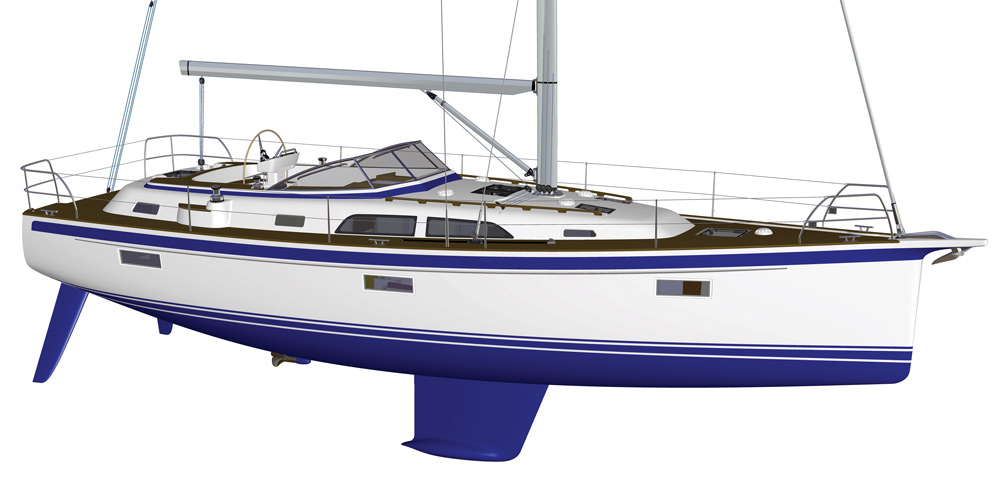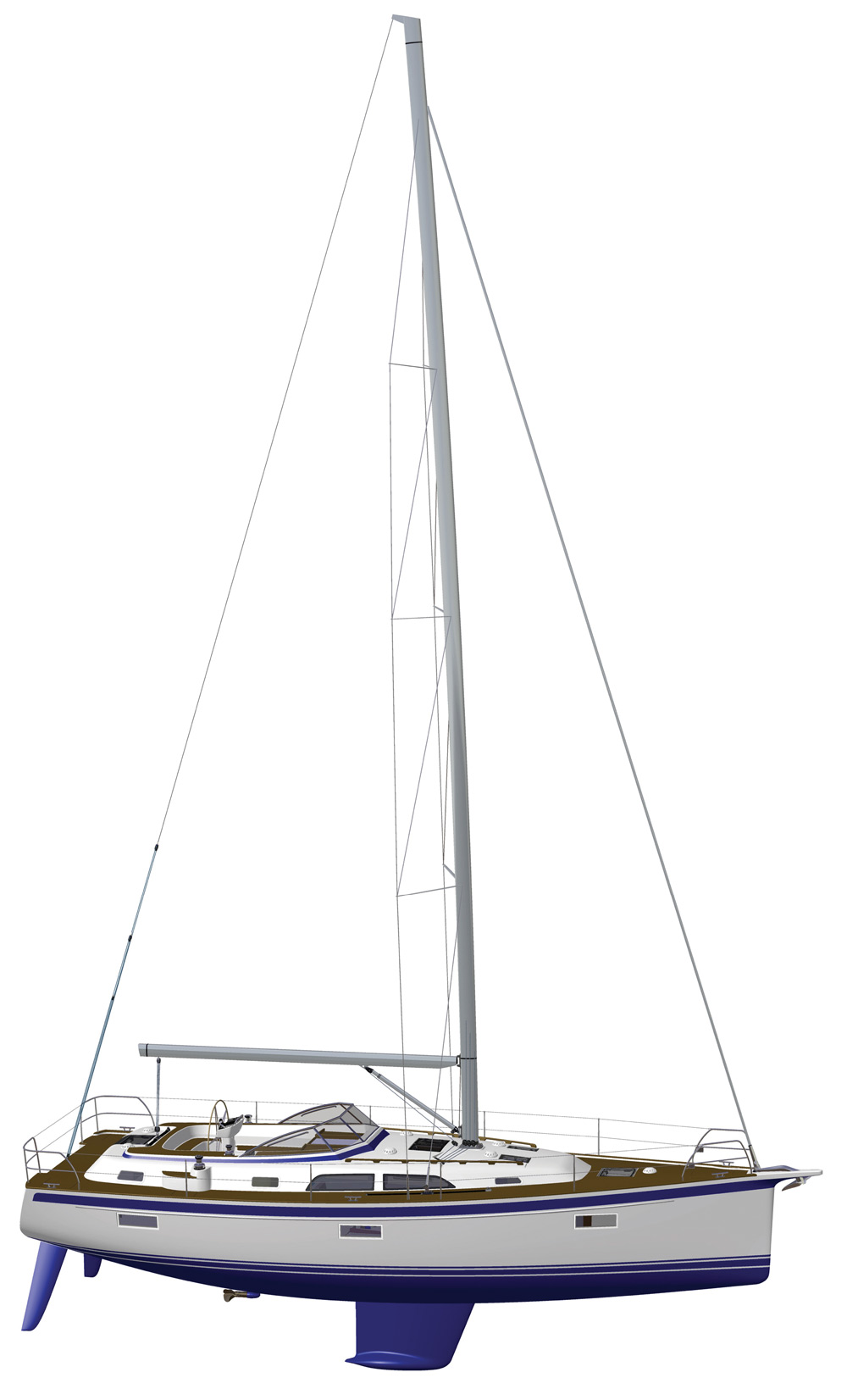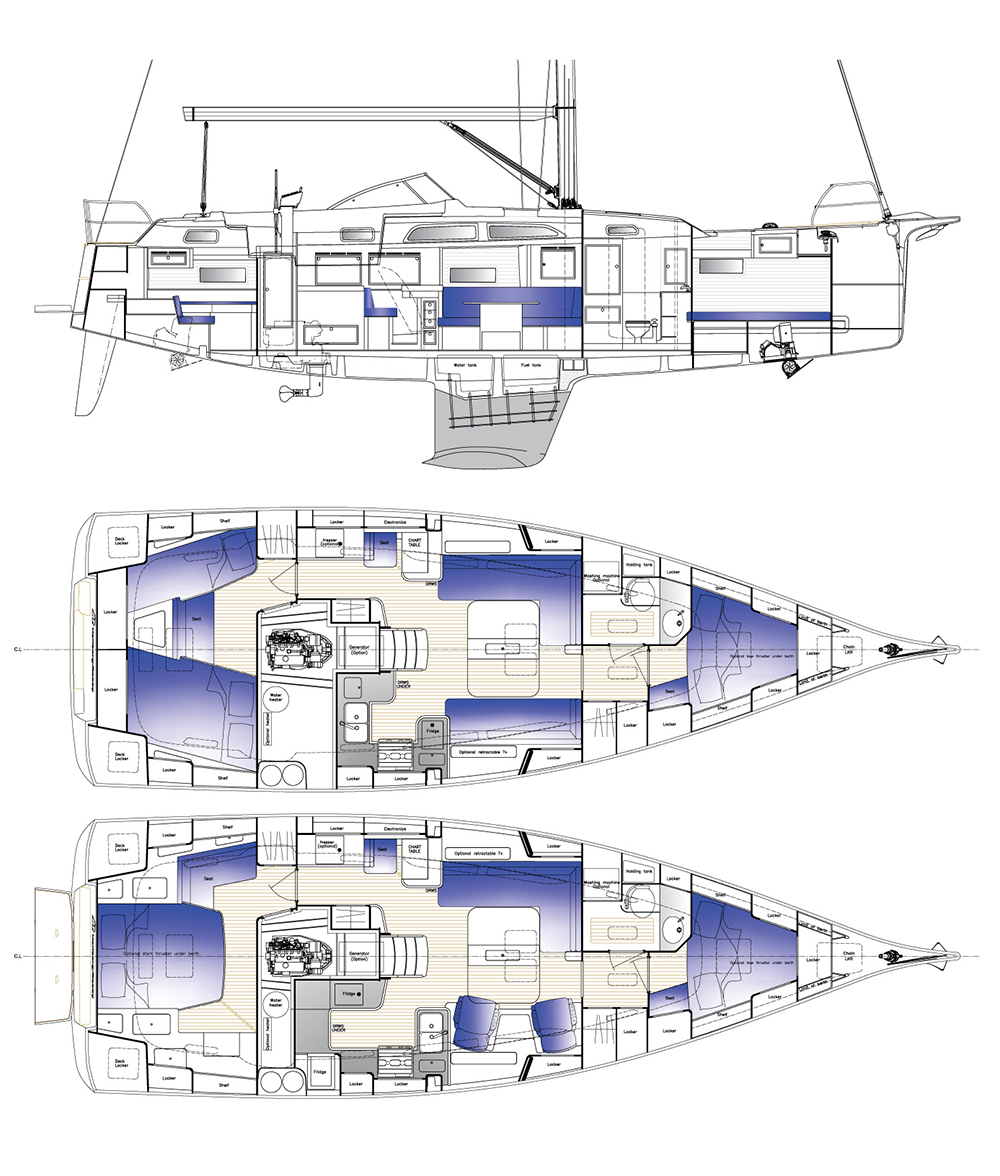Hallberg-Rassy 40C
This modern offshore cruiser has serious sea legs
The new Hallberg-Rassy models designed by German Frers are always fun to review. I get a wry smile when I look at the new designs considering what HRs looked like 45 years ago when my Valiant 40 was introduced. Back then, the HRs were very conservative, full-keeled boats, just what you would expect for a boat intended to be an offshore cruising boat.

The Valiant was a radical departure from that approach. Today the Valiant looks like an antique compared this new Hallberg-Rassy 40C. The company has moved dramatically toward a cruising boat that represents the latest in yacht design trends. Not that trends are always good, but in this case, I think the result is a good boat.
For fun let’s compare the old Valiant 40 with the new 40C. The boats have the same LOA, not counting the 40C’s sprit. The D/L of the Hallberg-Rassy is 190 compared to 260 for the Valiant and the L/B for the HR 40C is 2.95 and for the V40 it is 3.23. This is a big difference. The Valiant is considered to have moderate beam while Hallberg-Rassy with a L/B below 3 makes it a very beamy boat. Now consider where that beam is. The V40 has a pointy stern as it’s a double-ender. The HR 40C has an extremely wide transom with a width that is only about 8 inches less than its beam max.
Let’s look closely to understand how both could be considered good sea boats. The HR 40C has twin spade rudders. Its draft is 6 feet 4 inches, about the same as the V40, but the fin with outside lead ballast has a higher aspect ratio and there is a bulb on the tip. I don’t have numbers for wetted surface for the Hallberg-Rassy, but it’s safe to say it will be less than the Valiant’s 368 square feet. Given that the HR 40C has a DWL more than 4 feet longer than the V40, I have to say that it would be the faster boat in most conditions. But given that the Hallberg-Rassy is 45 years newer, I would think that is reasonable to expect. I’d love to see a photo taken of both boats, from dead astern, heeled 20 degrees so I could compare the wakes. I think the HR 40C is going to draw quite a bit of that transom.
There is little in the interior to compare between the two designs. The old Valiant layout is a bit stolid, very conventional and designed to work with an aft cockpit. The Hallberg-Rassy has a center cockpit with several possible layouts. There is an option for a centerline double berth aft or a double to starboard and a single berth to port. I won’t argue that the aft cabin does have a lot of appeal. If you choose the smaller galley layout you can capture enough volume aft of the galley for a spacious engine compartment. Not a chance with the Valiant. If you go with the bigger galley you get a perfect galley layout with lots of counter space. Even the smaller galley layout is very good. 
In the saloon there is an option for reading chairs to starboard or a settee/berth. I’m not wild on chairs in the saloon, and as longtime readers of my reviews will know, I call them “Streisand chairs.” It’s a long story. The Valiant’s saloon may have an advantage for offshore sailing because it offered port and starboard pilot berths. These are the most comfy berths while offshore. With the Hallberg-Rassy, you have to convert the saloon settees to sea berths. Then you run the risk of someone sitting on your head in the middle of the night.
Both boats have one, big head and that works fine for me. The forward accommodations are much nicer on the HR 40C. One major drawback to this layout is that it doesn’t have the large lazarette that is found on the V40. With the mechanics required for twin rudders there will be very little stowage aft. There are stowage lockers outboard.
No point in trying to compare rigs and deck layouts. They are just way too different. The HR 40C’s deck features a center cockpit with a windshield. I like the long foredeck. The traveler is aft of the cockpit. A fold-down swim step is a huge advantage over any boat without a swim step. The cockpit is on the small side but so is the cockpit on the Valiant.
The rig of the HR 40C features triple swept spreaders and a fractional foretriangle. I think for performance and overall efficiency this beats the old cutter rig on the Valiant. You can’t sail under staysail in heavy air, but the Hallberg-Rassy’s working jib is not that large, and with a few rolls on the furler, you will have a good heavy air sail. With a spreader sweep of 20 degrees running square with the jib poled out will be a problem. Cruisers love to go wing-and-wing, but racers know that the best downwind VMG is achieved when you sail a higher course. In that case the spreader sweep will not be such a problem. The SA/D for the HR is 18.52 compared to the old Valiant’s of 17.
This is a very good example of the modern cruising boat.
LOA 40’4”; LWL 38’6”; Beam 13’8.5”; Draft deep 6’4”, Displ. 24,250 lb.; Ballast 8,050 lb.; Sail area 970 sq. ft.; Auxiliary 60-hp; Fuel 105 gal.; Water 137 gal.; DL 190; L/B 2.95; SA/D 18.52
Our best estimate of the sailaway price:$544,000
Free State Yachts, P.O. Box 220, Deale, Maryland 20751, 800-871-1333, sales@freestateyachts.com


Comments